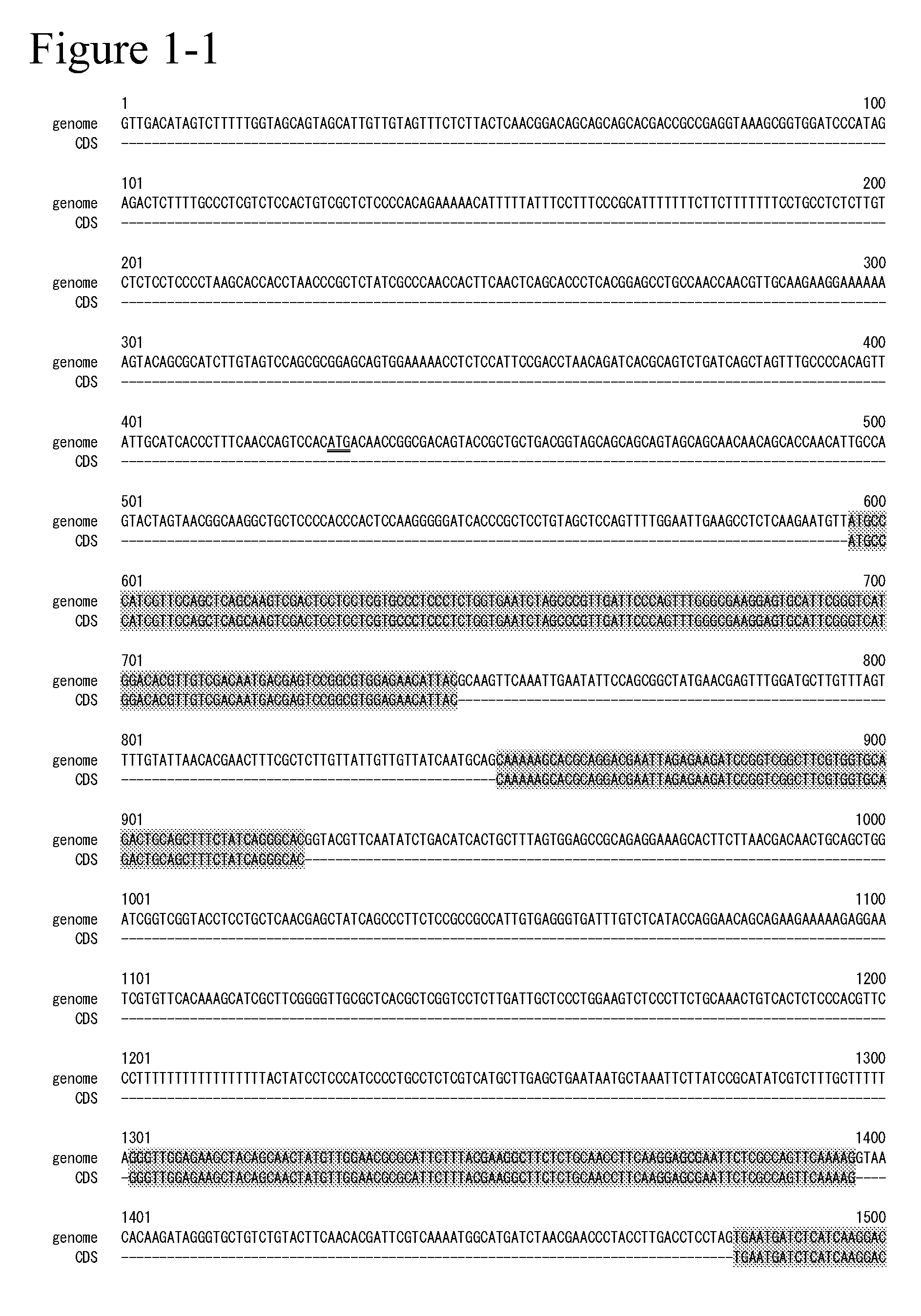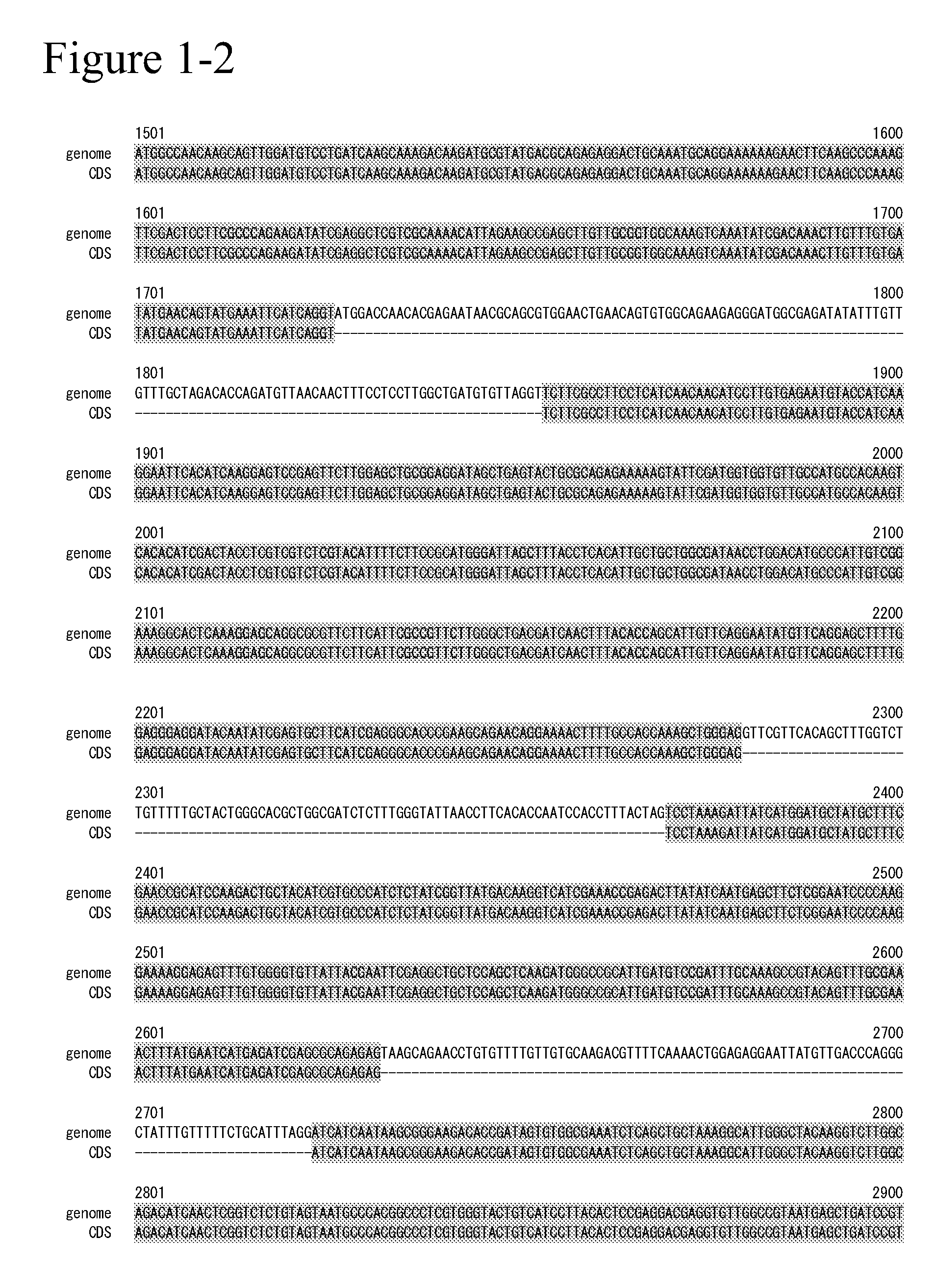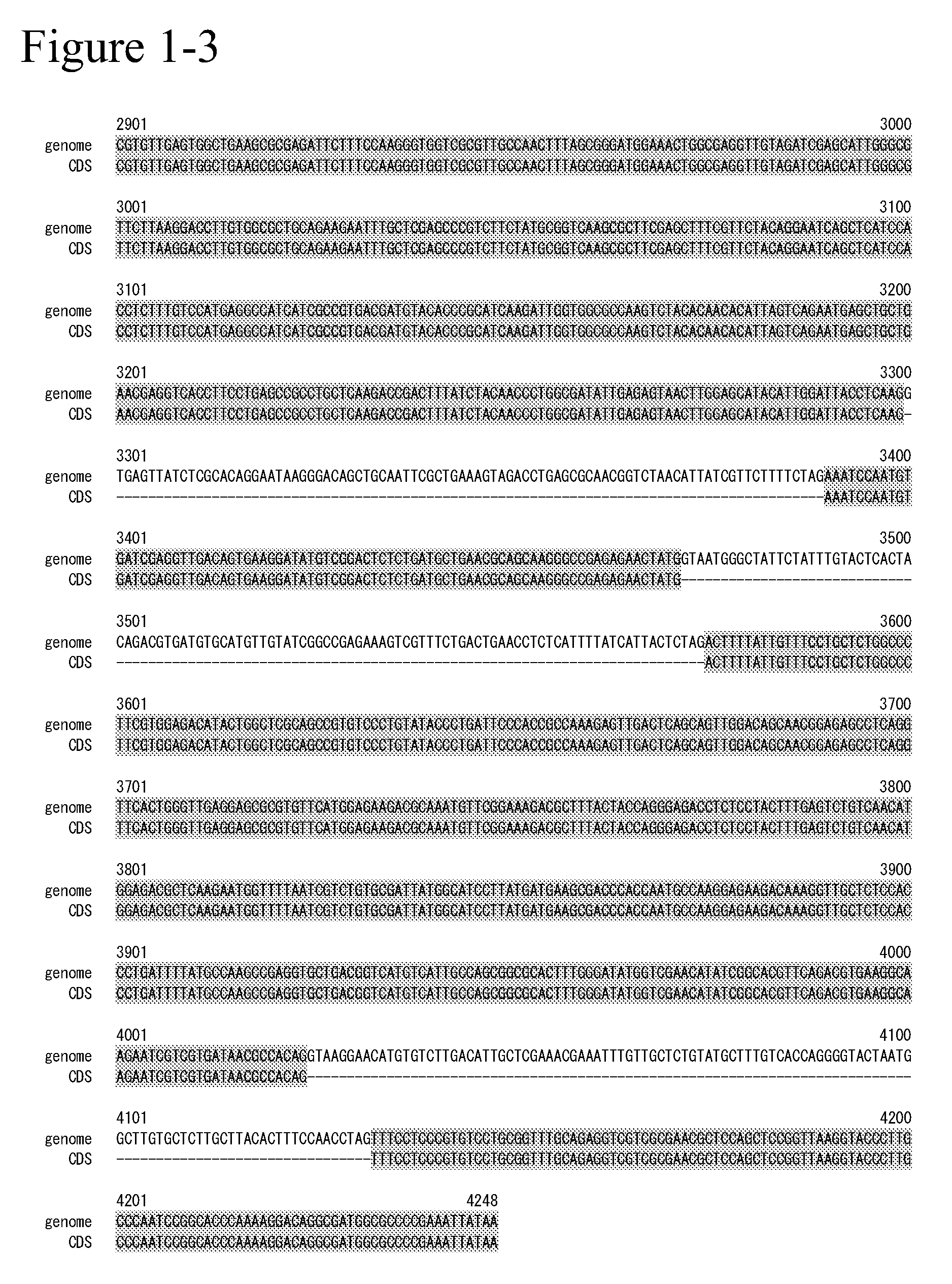Glycerol 3-phosphate acyltransferase homologue and use thereof
- Summary
- Abstract
- Description
- Claims
- Application Information
AI Technical Summary
Benefits of technology
Problems solved by technology
Method used
Image
Examples
example 1
Genomic Analysis of Mortierella alpina
[0372]M. alpina strain 1S-4 was inoculated into 100 mL of a GY2:1 medium (2% glucose, 1% yeast extract, pH 6.0) and was shake-cultured at 28° C. for 2 days. The cells were collected by filtration and genomic DNA was prepared by using DNeasy (QIAGEN).
[0373]The nucleotide sequence of the genomic DNA was determined with a Roche 454 GS FLX Standard. On this occasion, the nucleotide of a fragment library was sequenced in two runs, and the nucleotide of a mate pair library was sequenced in three runs. The resulting nucleotide sequences were assembled to obtain 300 supercontigs.
example 2
Synthesis of cDNA and Construction of cDNA Library
[0374]M. alpina strain 1S-4 was inoculated into 4 mL of a medium (2% glucose, 1% yeast extract, pH 6.0) and was cultured at 28° C. for 4 days. The cells were collected by filtration, and RNA was extracted with an RNeasy plant kit (QIAGEN). Complemetary DNA was synthesized using a SuperScript First-Strand system for RT-PCR (Invitrogen). In addition, from the total RNA, poly(A)+ RNA was purified using an Oligotex-dT30mRNA
[0375]Purification Kit (Takara Bio Inc.). A cDNA library was constructed with a ZAP-cDNA Gigapack III Gold Cloning Kit (Stratagene).
example 3
Search for GPAT Homolog
[0376]The amino acid sequence (GenBank Accession No. BAE78043) of plsB, GPAT derived from Escherichia coli (E. coli), was subjected to tblastn search for M. alpina strain 1S-4 genomic nucleotide sequences. As a result, a supercontig including the sequence set forth in SEQ ID NO: 7 gave a hit. The amino acid sequence of GPAT derived from yeast (S. cerevisiae), SCT1 (YBL011W) or GPT2 (YKR067W), was subjected to tblastn search for M. alpina strain 1S-4 genomic nucleotide sequences. As a result, supercontigs including the sequence set forth in SEQ ID NO: 12, SEQ ID NO: 13, SEQ ID NO: 14, or SEQ ID NO: 15 gave hits.
[0377]SEQ ID NO: 13 was the genomic sequence of MaGPAT1, and SEQ ID NO: 15 was the genomic sequence of MaGPAT2 (WO2008 / 156026). SEQ ID NO: 14 was the genomic sequence of MaGPAT3, which has been separately identified before by the present inventors (unpublished at the time of filing of the present application).
[0378]The genes relating to SEQ ID NO: 7 and ...
PUM
| Property | Measurement | Unit |
|---|---|---|
| Temperature | aaaaa | aaaaa |
| Fraction | aaaaa | aaaaa |
| Fraction | aaaaa | aaaaa |
Abstract
Description
Claims
Application Information
 Login to View More
Login to View More - R&D
- Intellectual Property
- Life Sciences
- Materials
- Tech Scout
- Unparalleled Data Quality
- Higher Quality Content
- 60% Fewer Hallucinations
Browse by: Latest US Patents, China's latest patents, Technical Efficacy Thesaurus, Application Domain, Technology Topic, Popular Technical Reports.
© 2025 PatSnap. All rights reserved.Legal|Privacy policy|Modern Slavery Act Transparency Statement|Sitemap|About US| Contact US: help@patsnap.com



